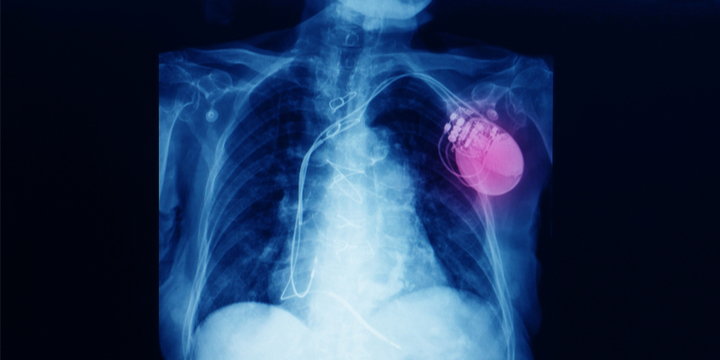His cardiac arrest on June 12 in the middle of the Denmark-Finland match had stunned all the supporters. After several heart examinations, Christian Eriksen will finally be fitted with a subcutaneous defibrillator, announced the Danish Football Federation (DBU).
Known as the DAI (Automatic Implantable Defibrillator), this device is a case of approximately 90 grams and 35 cm3. Implanted under the skin, and sometimes under the muscle, it is connected to the heart by one or more probes.
Read also: Cardiac arrest: more defibrillators in public places
What is DAI?
Its function: to regulate the heart rate in the event of dangerous acceleration or tachycardia. “Thanks to probes, the ICD records the electrical activity in the heart and differentiates the accelerations linked to the effort of the abnormal accelerations”, explains Dr. Laurent Uzan, cardiologist specializing in care related to sport and physical activity.
The device is the size of a pacemaker, this battery placed under the skin that stimulates the heart when it slows down. “Usually, it is placed under local anesthesia, just under the collarbone, on the right or left depending on the hand with which the patient is writing. Sometimes the ICD is placed inside the abdomen. “
Two possible operations
The device then has two ways to treat the abnormal acceleration: it can make the heart run faster than the tachycardia, and thus break it. In this case, “the patient feels a somewhat strange acceleration, then it passes”, explains the cardiologist.
But if this method does not work, the ICD triggers an electric shock, much like an external defibrillator. “The patient feels a very big shock in this case. Either he has already passed out, and he doesn’t feel anything, or he saw it before.
If the defibrillator has reached this point, you must quickly consult a cardiologist or the emergency room, to understand what has happened and possibly adapt the treatment, ”warns Dr. Uzan.
What pathologies?
Doctors make the decision to implant this type of device mainly in two cases: first, the patient has already suffered a heart attack or infarction.
Otherwise, the patient has a genetic condition, such as Brugada syndrome, which causes an abnormal heart rhythm that can lead to sudden death.
Remote monitoring possible
As long as the implantable automatic defibrillator has not sent an electric shock, you can consult your cardiologist in teleconsultation since the device can be interrogated remotely, explains Dr. Uzan.
On the other hand, after a few years (between 5 and 10 years depending on the model), your cardiologist will have to change the case. The probes will remain in place for life.
Stop sport?
Once the ICD is applied, physical activity should be monitored. According to Dr. Uzan, “It all depends on the cause of the implantation. In the vast majority of cases, competitive sport is no longer possible. “
The cardiologist specifies, however, that with regard to Christian Eriksen, no information has yet been communicated as to the rest of the player’s career.
However, light to moderate physical activity is sometimes allowed. “After a heart attack, we often allow jogging or cycling. But in the case of certain genetic causes, there may be a contraindication. For the vast majority of cases, light activity remains authorized, ”he explains.
What next for Eriksen’s career?
It has happened that other players like the Dutchman Daley Blind resume their careers after the installation of one of these devices.
The announcement of the DBU comes a few hours before the Denmark-Belgium match during which a tribute to Christian Eriksen is scheduled in the 10th minute.
 Cherry tomatoes contaminated with salmonella: 92 sick and 1 dead
Cherry tomatoes contaminated with salmonella: 92 sick and 1 dead  A better coaching method can make a person grow
A better coaching method can make a person grow  What is the method to prevent diabetes in children?
What is the method to prevent diabetes in children?  What are the effective factors in causing stomach ulcers?
What are the effective factors in causing stomach ulcers?  Why do embarrassing memories seem to appear at night?
Why do embarrassing memories seem to appear at night?  The amazing link between SARS-CoV-2 infection and newly started diabetes
The amazing link between SARS-CoV-2 infection and newly started diabetes  WHO says monkey pox is not a global emergency right now
WHO says monkey pox is not a global emergency right now  Single cell RNA sequencing uncovers new mechanisms of heart disease
Single cell RNA sequencing uncovers new mechanisms of heart disease  Hepatitis of unknown origin: 3 new deaths and 228 cases worldwide
Hepatitis of unknown origin: 3 new deaths and 228 cases worldwide 